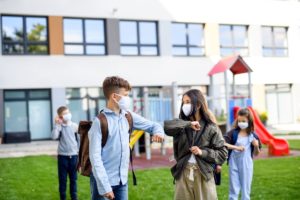I’ve been taking a big-picture look at Camden (more on this next week) and one particular data point stood out. Currently the city has three public school sectors: traditional district schools which serve about 5,000 students, regular public charters that serve about 4,000 students, and “renaissance schools” (hybrid district/charters) that serve 6,000 students. With the exception of a few charters that decline to participate in the universal enrollment system called One Camden, parents get to decide which type of public school their children attend. How is this version of school choice working out? Across all three sectors, academic outcomes (these are pre-COVID numbers) are improving, with students achieving roughly 85 days more of learning in math and 30 days more in reading. As Superintendent Katrina McCombs said at June’s College Signing Day, “today it doesn’t matter if you attend a district school, a charter school, a renaissance school, a public school, private school, parochial school, I don’t care, it does not matter.”
All that doomsday talk about renaissance and charters skimming off top students? Hogwash.
So I was struck by a recent summary of a study in Marginal Revolution, a blog written by Tyler Cowen and Alex Tabarrok, professors at George Mason University. Here Tabarrok looks at a stunning development in India where currently half of all students attend private schools. According to Tabarrok, who wrote a paper called Private Education in India: A Novel Test of Cream Skimming,
As the private share of school enrollment increases simple cream skimming becomes less plausible as the explanation for a higher rate of achievement in private schools. If the private schools cream skim when they are at 10% of public school enrollment how much cream can be left in the public school pool when the private schools account for 60% of total enrollment? Thus, if this simple form of cream skimming is the explanation for the higher achievement rate in private schools, we would expect the “private effect,” the difference between private and public scores, to be smaller in regions with a high share of private schooling.
Tabarrok continues,
“In fact, what I find is the private advantage, although larger in districts with smaller shares of private schooling (suggesting some skimming), stabilizes and doesn’t disappear even as the share of private schooling heads towards 100%. I also show that mean scores across all students, public and private, increase with the share of private schooling which is inconsistent with cream skimming (which predicts a constant mean). At right a picture showing that private scores continue to outpace public scores even in districts where private schools educate a majority or larger share of students.

In a new paper, Bagde, Epple and Taylor study 4 million students in thousands of villages in India during 2004-2014. In the early years of the study, none of the villages have private schools but entry starts to occur in 2007-2009 and the authors look at who switches to private schools. They find significant selection from higher income, higher caste, higher ability, and males towards private schools but no evidence that public school students are harmed.
The authors give a nod to the possibility that stratification could generate problems down the line if it increases inequality but they don’t mention the key point that, as with arguments for cream skimming, stratification concerns diminish the more students are in private schools and disappear altogether if 100% of students are in private schools.
More generally, India is pioneering private education on a grand scale and the entire world should pay attention to these innovations.”
As we look towards whatever post-COVID U.S. public education looks like, Tabarrok’s conclusions suggest that the divisive rhetoric surrounding school choice—both public and private- invigorates adults but hurts kids. According to this new report from the Center for Reinventing Education, which has indefatigably documented the impact of the pandemic on K-12 students, one silver lining is the combination of school closures, remote instruction, and parent dissatisfaction “upended the norms of a system that too often had failed to serve these students well and created opportunities to experiment with new approaches.” CRPE strongly recommends we be united in “the core belief that the needs of students are so varied, so profound, and so multifaceted that the one best system can’t possibly meet them all. Diverse needs will require diverse solutions, delivered by a diverse cast of community actors far beyond the bounds of our current public education system.”
Can we escape those bounds of a rigid and broken system? Can we be open to successful new models of schooling, whether in Camden or India? It’s what our children need. It’s what parents want. It’s not clear if the adults in charge–state departments of education, teacher union leaders, and other institutional representatives– will listen.



